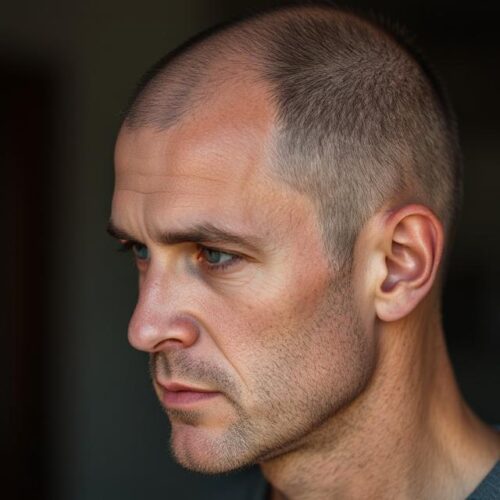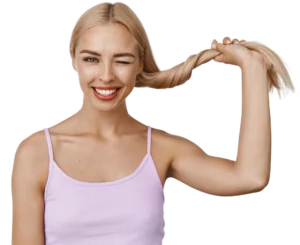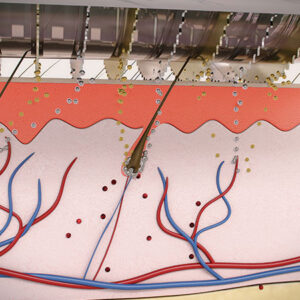Trichotillomania, a complex mental health condition characterized by recurrent, irresistible urges to pull out one’s hair, affects millions worldwide. This comprehensive guide delves into the intricacies of this disorder, exploring its symptoms, causes, diagnosis, and various treatment approaches. By shedding light on this often misunderstood condition, we aim to provide valuable insights and support for those affected by trichotillomania and their loved ones.
Living with trichotillomania can be challenging, but with proper understanding and support, individuals can learn to manage their symptoms effectively. This article offers a wealth of information on coping strategies, therapeutic interventions, and emerging treatments, empowering readers to take control of their hair-pulling behaviors and improve their overall quality of life.
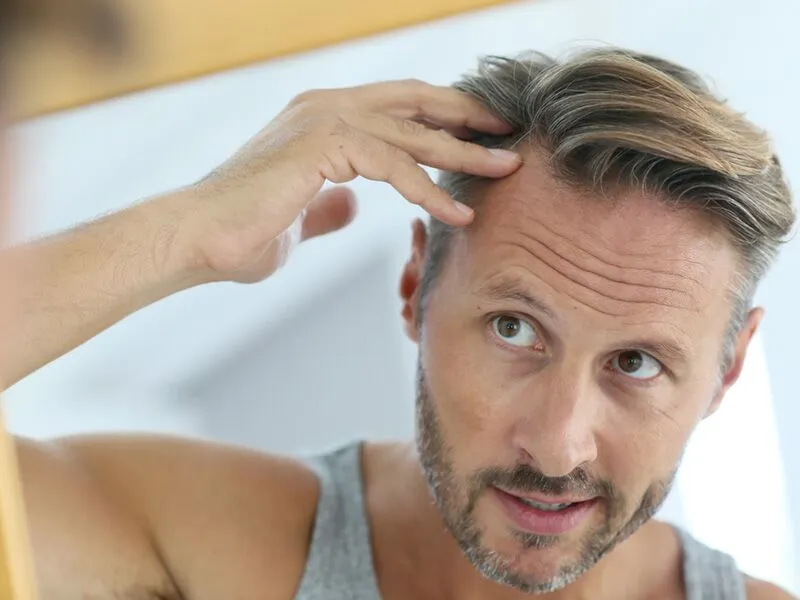
Understanding Trichotillomania: Definition and Prevalence
Trichotillomania, also known as hair-pulling disorder, is a mental health condition characterized by an irresistible urge to pull out one’s hair. This behavior often results in noticeable hair loss and can significantly impact an individual’s daily life and self-esteem. The disorder falls under the category of body-focused repetitive behaviors (BFRBs) and is closely related to obsessive-compulsive disorder (OCD).
Prevalence and Demographics
Research suggests that trichotillomania affects approximately 0.5% to 4% of the population, with onset typically occurring during early adolescence. While the disorder can affect individuals of all ages and genders, studies indicate that it is more common among women, particularly in adulthood. The prevalence ratio between women and men is estimated to be as high as 9:1 in some studies.
Impact on Daily Life
Trichotillomania can have far-reaching consequences on various aspects of an individual’s life. The visible hair loss often leads to feelings of shame, embarrassment, and social anxiety. Many people with trichotillomania go to great lengths to conceal their hair loss, which can be emotionally and physically draining. The disorder may also interfere with work, school, and personal relationships, as individuals may avoid social situations or struggle to maintain focus due to their hair-pulling urges.
Misconceptions and Stigma
Despite its prevalence, trichotillomania remains a largely misunderstood condition. Many people mistakenly believe that hair-pulling is simply a bad habit that can be easily overcome through willpower alone. This misconception often leads to feelings of guilt and inadequacy among those affected by the disorder. By raising awareness and promoting accurate information about trichotillomania, we can help reduce stigma and encourage individuals to seek the support they need.
Recognizing the Signs and Symptoms of Trichotillomania
Identifying trichotillomania can be challenging, as symptoms may vary from person to person. However, there are several common signs and behaviors associated with the disorder. Understanding these indicators can help individuals and their loved ones recognize when professional help may be necessary.
Physical Symptoms
The most apparent physical symptom of trichotillomania is noticeable hair loss. This can occur in various areas of the body, including:
- Scalp
- Eyebrows
- Eyelashes
- Pubic area
- Beard or mustache
- Arms and legs
In some cases, the hair loss may be patchy or uneven, while in others, it may be more widespread. Some individuals may also experience skin irritation or damage in the areas where they frequently pull hair.
Behavioral Patterns
People with trichotillomania often exhibit specific behavioral patterns related to their hair-pulling urges. These may include:
- Frequent touching or playing with hair
- Examining pulled-out hair closely
- Rubbing hair against the face or lips
- Chewing or eating pulled-out hair (trichophagia)
- Rituals or specific patterns of hair-pulling
- Attempts to conceal hair loss with hairstyles, makeup, or accessories
Emotional and Psychological Symptoms
Trichotillomania can have a significant impact on an individual’s emotional well-being. Common psychological symptoms include:
- Anxiety or tension before or during hair-pulling episodes
- Sense of relief or gratification after pulling hair
- Feelings of shame, guilt, or embarrassment about hair-pulling behavior
- Low self-esteem and poor body image
- Social anxiety or avoidance of social situations
- Depression or mood swings
Triggers and Patterns
Many individuals with trichotillomania report specific triggers or situations that intensify their urges to pull hair. These may include:
- Stress or anxiety
- Boredom or inactivity
- Certain textures or sensations
- Specific locations or environments
- Particular times of day
Recognizing these triggers can be an important step in developing effective coping strategies and treatment plans.
The Diagnostic Process: Identifying Trichotillomania
Obtaining an accurate diagnosis is crucial for individuals struggling with hair-pulling behaviors. The diagnostic process typically involves a comprehensive evaluation by a mental health professional, such as a psychiatrist or psychologist, who specializes in obsessive-compulsive and related disorders.
Diagnostic Criteria
According to the Diagnostic and Statistical Manual of Mental Disorders, Fifth Edition (DSM-5), the following criteria must be met for a diagnosis of trichotillomania:
- Recurrent pulling out of one’s hair, resulting in hair loss
- Repeated attempts to decrease or stop hair pulling
- The hair pulling causes clinically significant distress or impairment in social, occupational, or other important areas of functioning
- The hair pulling or hair loss is not attributable to another medical condition
- The hair pulling is not better explained by the symptoms of another mental disorder
Medical Evaluation
Before a definitive diagnosis of trichotillomania can be made, it is essential to rule out other potential causes of hair loss. A thorough medical evaluation may include:
- Physical examination of the affected areas
- Blood tests to check for underlying health conditions
- Scalp biopsy to assess hair follicle health
- Consultation with a dermatologist or trichologist
Psychological Assessment
In addition to the medical evaluation, a comprehensive psychological assessment is typically conducted. This may involve:
- Detailed interview about hair-pulling behaviors and associated thoughts and emotions
- Questionnaires or self-report measures specific to trichotillomania and related disorders
- Assessment of co-occurring mental health conditions, such as anxiety or depression
- Evaluation of the impact of hair-pulling on daily functioning and quality of life
Differential Diagnosis
It is important to distinguish trichotillomania from other conditions that may present with similar symptoms. Some conditions that may need to be ruled out include:
- Alopecia areata (an autoimmune condition causing hair loss)
- Obsessive-compulsive disorder (OCD)
- Body dysmorphic disorder
- Dermatillomania (skin-picking disorder)
- Substance-induced hair loss
By conducting a thorough diagnostic evaluation, mental health professionals can ensure that individuals receive the most appropriate and effective treatment for their specific condition.
Exploring the Causes and Risk Factors of Trichotillomania
While the exact causes of trichotillomania are not fully understood, research suggests that a combination of genetic, biological, and environmental factors may contribute to its development. Understanding these potential causes and risk factors can provide valuable insights into the nature of the disorder and inform treatment approaches.
Genetic Factors
Studies have shown that trichotillomania tends to run in families, suggesting a genetic component to the disorder. Research has identified several genes that may be associated with an increased risk of developing trichotillomania, including those involved in neurotransmitter function and impulse control.
Neurobiological Factors
Brain imaging studies have revealed differences in brain structure and function among individuals with trichotillomania compared to those without the disorder. These differences are particularly notable in areas of the brain involved in habit formation, impulse control, and reward processing. Some researchers propose that trichotillomania may be related to imbalances in neurotransmitters such as serotonin and dopamine.
Environmental Triggers
While genetic and neurobiological factors may create a predisposition to trichotillomania, environmental factors often play a role in triggering or exacerbating the disorder. Common environmental triggers include:
- Stress and anxiety
- Traumatic events or significant life changes
- Social isolation or loneliness
- Perfectionism or high levels of self-criticism
- Learned behaviors or coping mechanisms
Psychological Factors
Certain psychological factors may contribute to the development or maintenance of trichotillomania. These can include:
- Difficulty regulating emotions
- Low self-esteem or poor body image
- Perfectionism or a need for control
- Anxiety or depression
- Obsessive-compulsive tendencies
Age of Onset
Trichotillomania typically begins during childhood or adolescence, with the average age of onset between 10 and 13 years old. However, the disorder can develop at any age, and some individuals may experience a later onset in adulthood.
Gender Differences
While trichotillomania affects both males and females, studies have shown that the disorder is more prevalent among women in adulthood. This gender difference may be due to hormonal factors, societal pressures, or differences in help-seeking behaviors.
Understanding the complex interplay of these factors can help individuals with trichotillomania and their healthcare providers develop more targeted and effective treatment strategies. It is important to note that each person’s experience with trichotillomania is unique, and the specific causes and risk factors may vary from one individual to another.
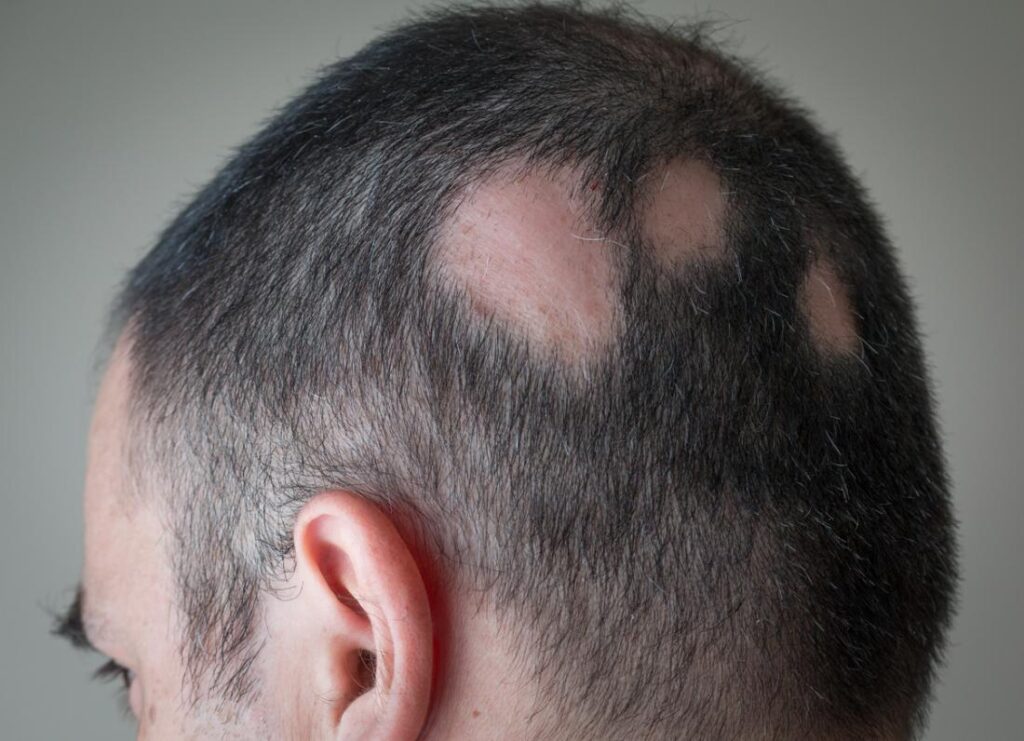
Treatment Approaches for Trichotillomania: Therapeutic Interventions
Effective treatment for trichotillomania often involves a combination of therapeutic interventions tailored to the individual’s specific needs and circumstances. While there is no one-size-fits-all approach, several evidence-based treatments have shown promise in helping individuals manage their hair-pulling urges and improve their overall quality of life.
Cognitive Behavioral Therapy (CBT)
Cognitive Behavioral Therapy is a widely used and effective treatment for trichotillomania. This approach focuses on identifying and changing negative thought patterns and behaviors associated with hair-pulling. Key components of CBT for trichotillomania include:
- Psychoeducation about the disorder
- Self-monitoring of hair-pulling behaviors
- Identifying triggers and high-risk situations
- Developing alternative coping strategies
- Challenging and reframing negative thoughts
- Gradual exposure to triggering situations
- Relapse prevention planning
Habit Reversal Training (HRT)
Habit Reversal Training is a specific type of behavioral therapy that has shown significant success in treating trichotillomania. The main components of HRT include:
- Awareness training: Helping individuals recognize the urge to pull hair and the situations that trigger it
- Competing response training: Teaching alternative behaviors to replace hair-pulling, such as clenching fists or engaging in a different activity
- Social support: Involving family members or friends in the treatment process to provide encouragement and reinforcement
Acceptance and Commitment Therapy (ACT)
Acceptance and Commitment Therapy is an approach that combines mindfulness techniques with behavioral strategies. ACT for trichotillomania focuses on:
- Accepting the presence of hair-pulling urges without judgment
- Developing psychological flexibility
- Clarifying personal values and goals
- Committing to actions that align with those values
- Mindfulness practices to increase present-moment awareness
Dialectical Behavior Therapy (DBT)
Dialectical Behavior Therapy, originally developed for treating borderline personality disorder, has shown promise in addressing trichotillomania. DBT skills that can be particularly helpful include:
- Mindfulness techniques
- Distress tolerance skills
- Emotion regulation strategies
- Interpersonal effectiveness training
Group Therapy
Participating in group therapy sessions can provide valuable support and opportunities for shared learning among individuals with trichotillomania. Benefits of group therapy include:
- Reduced feelings of isolation and shame
- Sharing of coping strategies and experiences
- Mutual support and encouragement
- Opportunities for role-playing and skill practice
Family Therapy
Involving family members in the treatment process can be beneficial, especially for children and adolescents with trichotillomania. Family therapy can focus on:
- Educating family members about the disorder
- Improving communication and support within the family
- Addressing family dynamics that may contribute to hair-pulling behaviors
- Developing strategies for supporting the individual’s recovery
Hypnotherapy
Some individuals with trichotillomania have reported benefits from hypnotherapy, although more research is needed to establish its effectiveness. Hypnotherapy may be used to:
- Reduce stress and anxiety
- Enhance relaxation and self-control
- Reinforce positive behaviors and coping strategies
It is important to note that the effectiveness of these therapeutic interventions can vary from person to person. Working closely with a mental health professional experienced in treating trichotillomania can help individuals determine the most appropriate treatment approach for their specific needs and circumstances.
Medication Options for Managing Trichotillomania
While psychotherapy is often the primary treatment for trichotillomania, medication can play a supportive role in managing symptoms for some individuals. It’s important to note that no medication has been specifically approved by regulatory agencies for the treatment of trichotillomania. However, several types of medications have shown promise in clinical studies and may be prescribed off-label by healthcare providers.
Selective Serotonin Reuptake Inhibitors (SSRIs)
SSRIs are a class of antidepressants that are sometimes used to treat trichotillomania. These medications work by increasing the levels of serotonin in the brain, which may help reduce hair-pulling urges and associated anxiety. Examples of SSRIs that have been studied for trichotillomania include:
- Fluoxetine (Prozac)
- Sertraline (Zoloft)
- Escitalopram (Lexapro)
While some individuals report benefits from SSRIs, research results have been mixed, and more studies are needed to establish their effectiveness for trichotillomania.
N-Acetylcysteine (NAC)
N-Acetylcysteine is an amino acid supplement that has shown promise in treating trichotillomania. NAC is thought to work by regulating glutamate, a neurotransmitter involved in compulsive behaviors. Some studies have found that NAC can help reduce hair-pulling urges and improve overall symptoms. Benefits of NAC include:
- Generally well-tolerated with minimal side effects
- Available over-the-counter as a dietary supplement
- May be used alone or in combination with other treatments
Antipsychotic Medications
In some cases, low doses of antipsychotic medications may be prescribed to help manage trichotillomania symptoms. These medications work by affecting dopamine levels in the brain and may help reduce impulsive behaviors. Examples include:
- Olanzapine (Zyprexa)
- Aripiprazole (Abilify)
- Risperidone (Risperdal)
It’s important to note that antipsychotic medications can have significant side effects and should be used with caution under close medical supervision.
Naltrexone
Naltrexone is an opioid antagonist that has been studied for its potential in treating trichotillomania. While primarily used for alcohol and opioid dependence, some research suggests it may help reduce hair-pulling urges in some individuals. However, more studies are needed to confirm its effectiveness.
Clomipramine
Clomipramine is a tricyclic antidepressant that has shown some efficacy in treating trichotillomania. It works by affecting both serotonin and norepinephrine levels in the brain. While it may be effective for some individuals, it can have more side effects compared to newer antidepressants.
Considerations for Medication Use
When considering medication for trichotillomania, it’s important to keep the following points in mind:
- Medications are typically used in conjunction with psychotherapy, not as a standalone treatment
- Response to medication can vary greatly between individuals
- It may take several weeks to notice improvements in symptoms
- Regular follow-ups with a healthcare provider are essential to monitor effectiveness and side effects
- Abruptly stopping medication can lead to withdrawal symptoms or a return of trichotillomania symptoms
It’s crucial to work closely with a healthcare provider experienced in treating trichotillomania to determine the most appropriate medication regimen. They can help weigh the potential benefits against possible side effects and monitor progress over time.
Coping Strategies and Self-Help Techniques for Trichotillomania
While professional treatment is often necessary for managing trichotillomania, there are numerous self-help strategies and coping techniques that individuals can employ to support their recovery and reduce hair-pulling urges. These techniques can be used in conjunction with therapy and medication to enhance overall treatment effectiveness.
Identifying Triggers and Patterns
One of the first steps in managing trichotillomania is to become more aware of personal triggers and hair-pulling patterns. This can be achieved through:
- Keeping a hair-pulling diary to track when, where, and why urges occur
- Noting emotional states or situations that precede hair-pulling episodes
- Identifying specific sensations or textures that trigger the urge to pull
By understanding these patterns, individuals can develop targeted strategies to address their unique triggers.
Stimulus Control Techniques
Stimulus control involves modifying the environment to reduce opportunities for hair-pulling. Some effective strategies include:
- Wearing gloves or bandages on fingers to create a physical barrier
- Covering mirrors or avoiding well-lit areas that make it easier to see and pull hair
- Changing hairstyles or using accessories to make hair less accessible
- Removing tweezers or other tools that may be used for pulling
Habit Reversal Strategies
Implementing habit reversal techniques can help interrupt the hair-pulling cycle. Some useful strategies include:
- Engaging in a competing response, such as clenching fists or pressing fingertips together when the urge to pull arises
- Using fidget toys or stress balls to keep hands occupied
- Practicing deep breathing or progressive muscle relaxation to manage tension
- Redirecting the urge by gently stroking or massaging the affected area instead of pulling
Mindfulness and Relaxation Techniques
Incorporating mindfulness and relaxation practices into daily routines can help reduce stress and increase awareness of hair-pulling urges. Useful techniques include:
- Mindfulness meditation
- Progressive muscle relaxation
- Guided imagery
- Deep breathing exercises
- Yoga or tai chi
Regular practice of these techniques can help individuals become more attuned to their thoughts and emotions, making it easier to recognize and manage hair-pulling urges.
Healthy Lifestyle Habits
Maintaining overall physical and mental well-being can support efforts to manage trichotillomania. Important lifestyle factors to consider include:
- Regular exercise to reduce stress and improve mood
- Adequate sleep to promote emotional regulation
- Balanced nutrition to support brain health
- Limiting caffeine and alcohol intake, which can exacerbate anxiety and impulsivity
- Engaging in enjoyable hobbies and activities to reduce boredom and stress
Support Networks
Building a strong support network is crucial for individuals managing trichotillomania. This can include:
- Joining support groups or online communities for people with trichotillomania
- Confiding in trusted friends or family members about the condition
- Working with a therapist or counselor who specializes in trichotillomania
- Connecting with advocacy organizations that provide resources and support
Self-Compassion and Acceptance
Developing self-compassion and acceptance is an important aspect of coping with trichotillomania. This involves:
- Recognizing that setbacks are a normal part of the recovery process
- Practicing self-forgiveness when hair-pulling episodes occur
- Challenging negative self-talk and replacing it with more compassionate thoughts
- Focusing on progress and small victories rather than perfection
Alternative Therapies
Some individuals find benefit in exploring alternative or complementary therapies to support their trichotillomania management. These may include:
- Acupuncture
- Massage therapy
- Art therapy
- Music therapy
- Aromatherapy
While the effectiveness of these approaches may vary, they can provide additional tools for stress reduction and self-expression.
By incorporating a combination of these self-help strategies and coping techniques into their daily lives, individuals with trichotillomania can enhance their ability to manage hair-pulling urges and support their overall recovery process. It’s important to remember that finding the most effective combination of strategies may take time and experimentation, and what works for one person may not work for another. Patience, persistence, and self-compassion are key elements in developing a successful self-help approach to managing trichotillomania.
Best selling hair growth products:
Hair Regrowth and Cosmetic Solutions for Trichotillomania
For many individuals with trichotillomania, hair regrowth and cosmetic solutions play an important role in managing the physical effects of the disorder and improving self-esteem. While addressing the underlying psychological aspects of trichotillomania is crucial, exploring options for hair restoration and concealment can provide significant emotional relief and support the overall recovery process.
Natural Hair Regrowth
In many cases, hair will regrow naturally once pulling has stopped or significantly decreased. However, the regrowth process can take time and may vary depending on factors such as:
- The extent and duration of hair pulling
- The specific areas affected
- Individual hair growth patterns
- Overall health and nutrition
To support natural hair regrowth, consider the following strategies:
- Maintain a balanced diet rich in vitamins and minerals essential for hair health
- Stay hydrated to support overall bodily functions, including hair growth
- Avoid harsh hair treatments or excessive styling that may damage new growth
- Be patient and gentle with new hair growth, as it may initially appear different in texture or color
Topical Treatments
Several over-the-counter and prescription topical treatments may help stimulate hair regrowth or improve the appearance of thinning areas:
- Minoxidil (Rogaine): Available over-the-counter, this medication can be applied directly to the scalp to promote hair growth
- Prescription steroid creams: In some cases, topical corticosteroids may be prescribed to reduce inflammation and promote regrowth
- Essential oils: Some individuals report benefits from using essential oils such as rosemary or peppermint oil to stimulate hair growth, although scientific evidence is limited
Hairegen Device
The Hairegen device is a relatively new treatment option specifically designed for individuals with trichotillomania. This innovative device uses low-level light therapy (LLLT) to stimulate hair follicles and promote regrowth in areas affected by hair pulling. Some potential benefits of the Hairegen device include:
- Non-invasive and painless treatment
- Can be used at home
- May help reduce the urge to pull hair
- Potential to improve hair density and thickness in affected areas
While more research is needed to fully establish its effectiveness, the Hairegen device offers a promising option for those seeking to support hair regrowth alongside other treatment approaches.
Hair and Scalp Care
Proper hair and scalp care can support the regrowth process and improve the overall health of remaining hair:
- Use gentle, sulfate-free shampoos and conditioners
- Avoid excessive heat styling or chemical treatments
- Massage the scalp regularly to stimulate blood flow
- Consider using a silk or satin pillowcase to reduce friction and breakage
Cosmetic Concealers
For immediate coverage of thinning areas or bald patches, various cosmetic solutions are available:
- Hair fibers: These are tiny fibers that adhere to existing hair, creating the appearance of fuller coverage
- Scalp concealers: Powders or creams designed to match hair color and camouflage visible scalp
- Eyebrow pencils or powders: For those who pull eyebrow hair
- False eyelashes or eyelash serums: To address eyelash pulling
Wigs and Hairpieces
For more extensive hair loss, wigs and hairpieces can provide a comprehensive solution:
- Full wigs: Available in various styles, colors, and materials (synthetic or human hair)
- Partial hairpieces or toppers: Designed to cover specific areas of thinning or baldness
- Hair extensions: Can be used to add volume or length to existing hair
When choosing a wig or hairpiece, consider factors such as:
- Comfort and breathability
- Ease of maintenance
- Durability and longevity
- Natural appearance and color match
Professional Hair Restoration
In some cases, individuals may consider more advanced hair restoration techniques:
- Hair transplantation: Surgical procedure that moves hair follicles from one area of the scalp to another
- Scalp micropigmentation: A form of medical tattooing that creates the appearance of a fuller head of hair
- Platelet-rich plasma (PRP) therapy: Involves injecting a concentration of the patient’s own platelets to stimulate hair growth
It’s important to note that these procedures may not be suitable for everyone and should be carefully considered in consultation with a healthcare provider and hair restoration specialist.
Emotional Considerations
While exploring hair regrowth and cosmetic solutions can be empowering, it’s crucial to address the emotional aspects of hair loss and regrowth:
- Be patient with the regrowth process, as it can take time
- Practice self-compassion and avoid self-criticism
- Celebrate small victories and progress in hair regrowth
- Seek support from therapists, support groups, or loved ones to address body image concerns
By combining appropriate hair regrowth strategies and cosmetic solutions with ongoing psychological support and treatment, individuals with trichotillomania can work towards both physical and emotional healing. Remember that each person’s journey with trichotillomania is unique, and finding the right combination of solutions may require time and experimentation.
Supporting Loved Ones with Trichotillomania: A Guide for Family and Friends
When a family member or friend is struggling with trichotillomania, providing support and understanding can make a significant difference in their recovery journey. However, it can be challenging to know how to best help someone with this condition. This guide offers practical advice and strategies for supporting loved ones with trichotillomania while also taking care of your own emotional well-being.
Educate Yourself
One of the most important steps in supporting someone with trichotillomania is to educate yourself about the disorder. This includes:
- Learning about the symptoms, causes, and treatment options
- Understanding that trichotillomania is a mental health condition, not a choice or bad habit
- Recognizing that recovery is a process that may involve setbacks and challenges
By gaining a deeper understanding of trichotillomania, you can provide more informed and compassionate support.
Communicate Openly and Compassionately
Creating an environment of open, non-judgmental communication is crucial. Consider the following approaches:
- Express your concern and willingness to support them
- Listen actively without interrupting or offering unsolicited advice
- Avoid criticism or expressions of frustration about their hair-pulling behavior
- Use “I” statements to express your feelings, such as “I’m here for you” or “I want to understand how I can help”
Respect Privacy and Boundaries
While it’s important to offer support, it’s equally crucial to respect your loved one’s privacy and boundaries:
- Ask how they would like you to respond when you notice hair-pulling behavior
- Avoid drawing attention to hair loss or regrowth unless they initiate the conversation
- Respect their decision about who to tell about their condition
Encourage Professional Help
Supporting your loved one in seeking professional help can be a crucial step in their recovery:
- Offer to help research treatment options or find a therapist specializing in trichotillomania
- Propose accompanying them to appointments if they feel comfortable with this
- Be patient if they’re not ready to seek help immediately, but continue to gently encourage treatment
Participate in Treatment
If your loved one is comfortable with your involvement, participating in their treatment can be beneficial:
- Attend family therapy sessions if offered
- Learn about the specific treatment approaches being used, such as habit reversal training
- Help implement strategies at home, such as removing mirrors or providing alternative activities during high-risk times
Provide Practical Support
There are many practical ways to support someone with trichotillomania:
- Help create a “fidget box” with items to keep hands busy during high-risk times
- Assist in modifying the environment to reduce triggers, such as covering mirrors
- Offer to engage in stress-reducing activities together, like exercise or meditation
Be Patient and Understanding
Recovery from trichotillomania is often a long-term process that may involve setbacks:
- Celebrate small victories and progress, no matter how minor they may seem
- Avoid expressing disappointment or frustration if your loved one experiences a relapse
- Understand that trichotillomania symptoms may fluctuate over time
Take Care of Yourself
Supporting someone with trichotillomania can be emotionally challenging. It’s important to take care of your own well-being:
- Set healthy boundaries to avoid burnout
- Seek support for yourself through therapy or support groups for family members
- Engage in self-care activities to manage stress and maintain your own mental health
Address Misconceptions and Stigma
Help combat misconceptions and stigma surrounding trichotillomania:
- Correct misinformation when you encounter it
- Share accurate information about the disorder with others, with your loved one’s permission
- Encourage your loved one to connect with support groups or online communities for individuals with trichotillomania
Foster a Positive Home Environment
Creating a supportive and positive home environment can be beneficial:
- Promote stress-reduction techniques for the whole family
- Encourage open communication about emotions and challenges
- Focus on building self-esteem and body positivity for all family members
Be Mindful of Language
The words we use can have a significant impact. Be mindful of your language when discussing trichotillomania:
- Avoid using terms like “bad habit” or suggesting they can simply stop pulling
- Use person-first language, such as “person with trichotillomania” rather than “trichotillomaniac”
- Refrain from making appearance-based comments, even if well-intentioned
Plan for High-Stress Situations
Work with your loved one to develop strategies for managing high-stress situations that may trigger hair-pulling:
- Identify potential triggers in advance
- Develop a plan for coping with stress during events or activities
- Offer to be a support person during challenging times
By implementing these strategies and approaches, family members and friends can provide valuable support to loved ones with trichotillomania. Remember that every individual’s experience with trichotillomania is unique, and it may take time to find the most effective ways to offer support. Patience, understanding, and open communication are key to helping your loved one navigate their recovery journey.
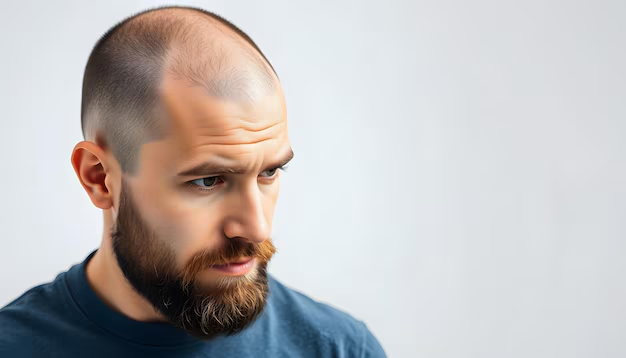
Trichotillomania in Children and Adolescents: Special Considerations
Trichotillomania in children and adolescents presents unique challenges and requires specific considerations in terms of diagnosis, treatment, and support. Early intervention is crucial, as addressing the disorder during these formative years can significantly impact long-term outcomes and overall well-being.
Prevalence and Onset
Trichotillomania often begins in childhood or early adolescence, with the average age of onset between 10 and 13 years. However, it can start as early as infancy or later in adolescence. Some key points to consider:
- In young children, hair-pulling may be a self-soothing behavior that resolves on its own
- The onset of trichotillomania in older children and adolescents is more likely to persist and require intervention
- Prevalence rates in children and adolescents are estimated to be between 1-3%
Diagnostic Challenges
Diagnosing trichotillomania in children and adolescents can be challenging for several reasons:
- Young children may not have the verbal skills to express their experiences
- Adolescents may feel embarrassed and try to hide their hair-pulling behavior
- Symptoms may be mistaken for other conditions, such as stress-related hair loss or dermatological issues
Healthcare providers should be aware of these challenges and conduct thorough assessments that include:
- Detailed medical and psychological history
- Physical examination of hair loss patterns
- Observation of behavior during the assessment
- Input from parents, teachers, and other caregivers
Treatment Approaches
Treatment for trichotillomania in children and adolescents often involves a combination of approaches tailored to the individual’s age, developmental stage, and specific needs:
Cognitive Behavioral Therapy (CBT):
- Adapted for younger age groups
- May include play therapy elements for younger children
- Focuses on developing age-appropriate coping skills
Habit Reversal Training (HRT):
- Simplified for younger children
- Involves parents or caregivers in the treatment process
- Emphasizes positive reinforcement for using competing responses
Family Therapy:
- Addresses family dynamics that may contribute to or maintain hair-pulling behaviors
- Educates family members about trichotillomania and how to provide support
- Develops strategies for managing stress and communication within the family
Medication:
- Used more cautiously in children and adolescents
- May be considered for severe cases or when comorbid conditions are present
- Requires close monitoring for side effects and effectiveness
School-Based Interventions
Collaborating with schools is often crucial in managing trichotillomania in children and adolescents:
- Educating teachers and school staff about trichotillomania
- Developing accommodations, such as allowing the use of fidget toys in class
- Addressing bullying or social issues related to visible hair loss
- Implementing stress-reduction techniques in the classroom
Parental Involvement
Parents play a vital role in supporting children and adolescents with trichotillomania:
- Learning about the disorder and its treatment
- Participating in therapy sessions when appropriate
- Implementing strategies at home to support treatment goals
- Providing emotional support and fostering a non-judgmental environment
- Monitoring progress and communicating with healthcare providers
Addressing Self-Esteem and Body Image
Trichotillomania can significantly impact self-esteem and body image, especially during the sensitive periods of childhood and adolescence:
- Encourage open discussions about feelings related to hair loss
- Focus on building self-worth based on non-appearance factors
- Explore age-appropriate cosmetic solutions if desired
- Connect with support groups or mentors who have experienced trichotillomania



